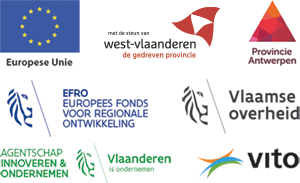ECWRTI
Textile mills can reduce their water consumption by up to 90% using the EColoRO technique, which consists of electrocoagulation followed by membrane filtration, to treat their wastewater and then reuse it. On June 1, 2015 a European consortium led by the Dutch company EColoRO BV in Almere and the Institute for Sustainable Process Technology (ISPT) in Amersfoort, the Netherlands will commence a 3.5-year project to demonstrate the new technology on site at full industrial scale, first at a textile mill in Belgium and later at a textile mill in Italy. Other consortium members are VITO, the Flemish institute for technology research, the Czech company INOTEX Ltd, the Dutch company Morselt Borne BV, and EURATEX – the European Apparel and Textile Confederation. EColoRO will provide operational management and ISPT is responsible for overall project coordination.
The core of the EColoRO technique is electrocoagulation, which enables the removal of 93 to 96% of the dyes and pigments in textile wastewater. Membranes can then be used to fully purify the water via ultrafiltration or reverse osmosis. As a result, up to 90% of the water can be reused. About 10% will be lost due to concentrated waste stream or escapes via evaporation.
The new technology has two major advantages: it enables textile mills to reduce fresh water consumption by up to 90% and it lowers their wastewater treatment costs. Other advantages include relatively low energy consumption, no additional chemicals, and no required changes to existing processes. EColoRO’s innovative approach integrates electrocoagulation with systems that are already being used in industrial applications, accelerating the step to commercial market implementation when the project completes. In addition to demonstrating the EColoRO concept, within the consortium INOTEX will investigate how textile mills can make optimal use of the treated water and VITO will look at ways to reuse the pigment- and iron-rich slurry generated by the purification process.
